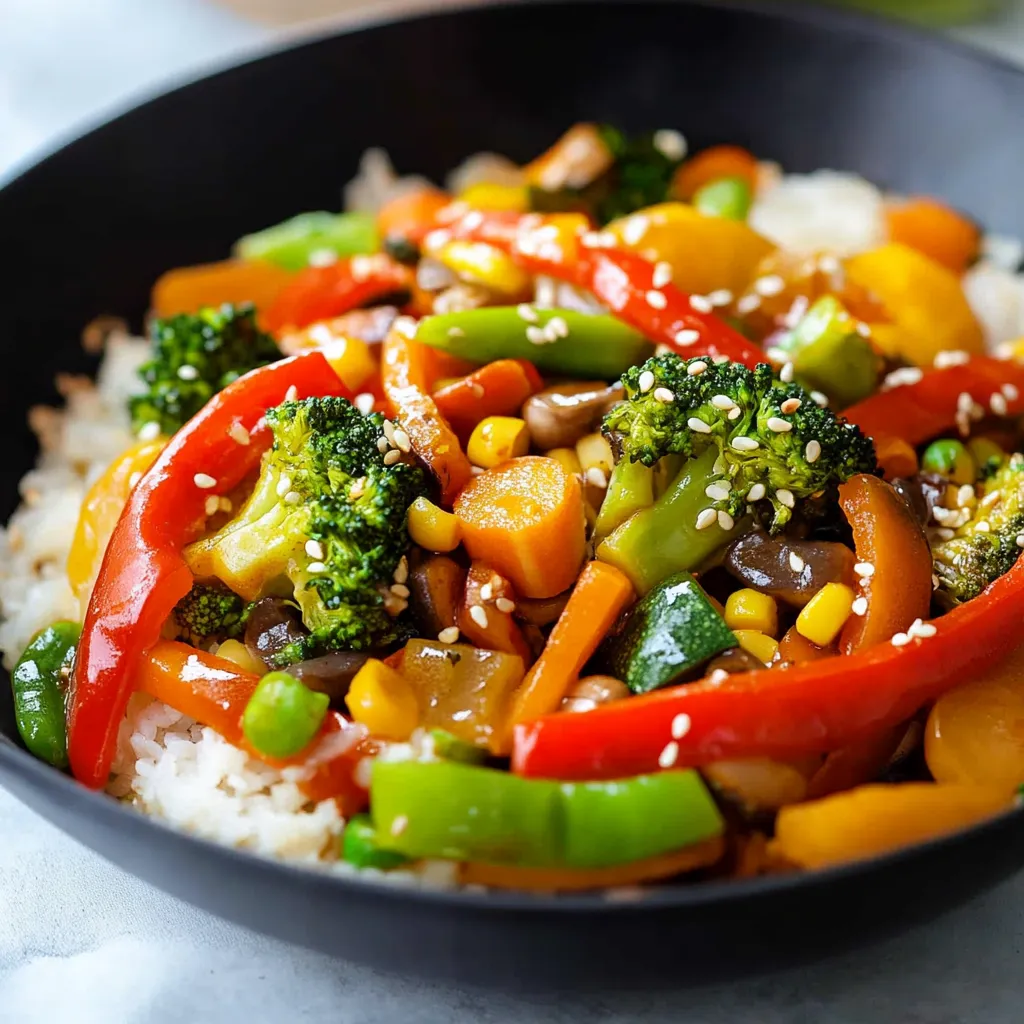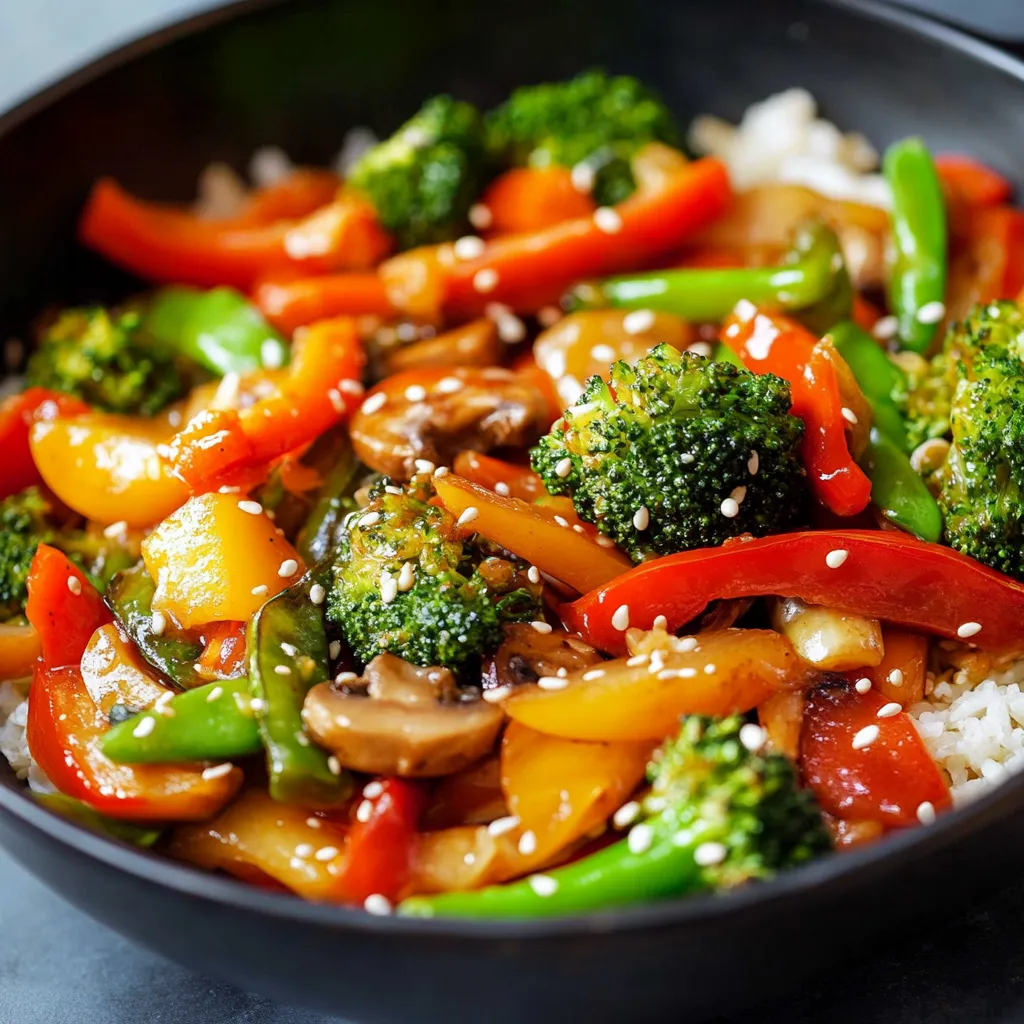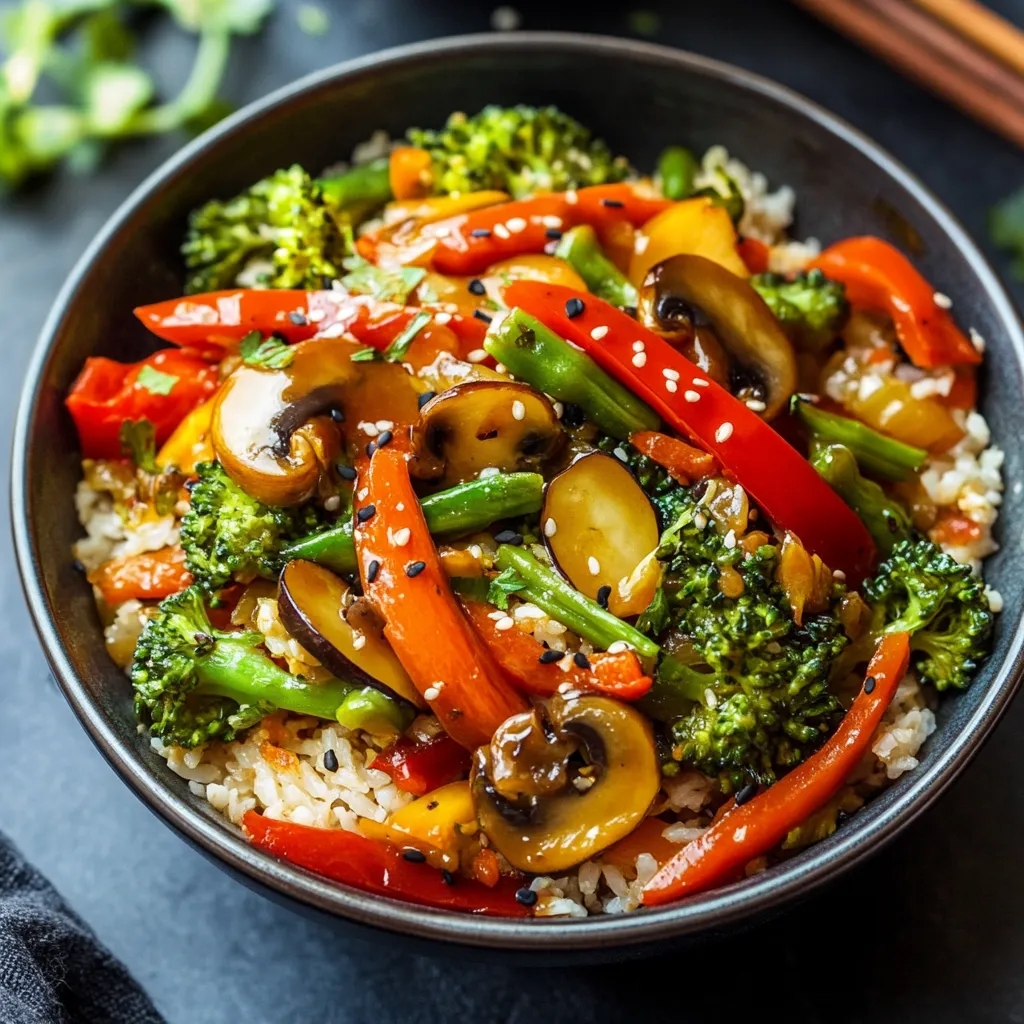 Save it
Save it
Turn everyday veggies into a bright, flavorful stir-fry better than any delivery option. This adaptable dish pairs snappy vegetables with a thick, homemade sauce that wraps around each morsel just right.
I've tried tons of stir-fry methods over the years and found that getting the timing right and nailing the sauce thickness makes all the difference. This has become what we cook when nobody's got time to fuss.
Key Ingredients Breakdown:
- Vegetables: Pick crisp, bright ones
- Soy Sauce: Get reduced salt for better taste control
- Ginger: Use the real root, not jarred stuff
- Garlic: Fresh cloves, just chopped
- Oil: Something that won't smoke easy like peanut or canola
- Sesame Oil: Only the dark toasted kind
- Cornstarch: Needed to make sauce thick
Cooking Steps:
- Making Your Sauce:
- Mix soy sauce, sesame oil, chopped garlic, grated ginger, and brown sugar in a bowl. Stir cornstarch with cold water until smooth, then add to your mix. Put aside.
- Getting Veggies Ready:
- Cut everything the same size so it all cooks evenly. Group them by how long they take: tough stuff (carrots, broccoli), middle stuff (mushrooms, bell peppers), quick stuff (snow peas).
- First Step Cooking:
- Get a big wok or pan super hot. Add oil and wait till it shimmers. Toss in the tough veggies first, like carrots and broccoli.
- Next Phase:
- After about 2-3 minutes, throw in the middle-cooking veggies. Keep everything moving around. You should hear a sizzle when veggies hit the pan.
- Last Cooking Bit:
- Add the quick-cooking veggies at the end. Keep stirring until everything's crisp but tender, about 5-6 minutes total.
- Adding The Sauce:
- Pour your sauce around the sides of the pan so it runs down. Toss everything fast to coat it all. Cook until the sauce gets shiny and thick.
 Save it
Save it
Good prep work is what makes stir-fry turn out great. My grandma always told me to lay out my veggies just like an artist sets up their paints.
Managing Your Wok Heat
Getting the heat just right makes veggies cook fast but stay crunchy. Don't throw cold sauce into a super hot pan - it should be barely bubbling when you add it. Use high heat for cooking veggies, slightly lower for thickening your sauce.
Getting Your Sauce Just Right
Let your sauce bubble gently while stirring it until it sticks to the back of your spoon. It should look shiny and be thick enough to stick to your veggies without getting gummy.
Keeping Leftovers Fresh
Store what's left in a sealed container for up to 3 days. Heat it up quick in a hot pan to keep the crunch. Don't put it in the freezer or your veggies will turn soggy.
Ways To Serve It
Put it on top of plain rice or noodles. Add some tofu, shrimp, or chicken bits to make it a full meal. Sprinkle some sesame seeds and green onions on top.
 Save it
Save it
I now use this method whenever I need to use up whatever veggies are in season. The flexible sauce and cooking approach turns any mix of vegetables into a tasty dinner that's way better than anything you'd get delivered.
FAQ sur la recette
- → Can I use frozen veggies?
- Sure, but make sure to thaw and drain them so they're not watery or soggy.
- → Is the sauce gluten-free?
- Swap soy sauce with tamari to make it gluten-free.
- → Can I cut veggies ahead?
- Absolutely, chop them up to 48 hours ahead and stash in airtight containers.
- → What proteins can I throw in?
- Tofu, shrimp, chicken, or beef are great. Just cook them first and set aside.
- → How do I store extras?
- Keep them in the fridge for three days max. Warm them up fast in a wok to keep the crunch.
